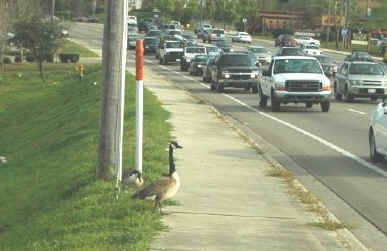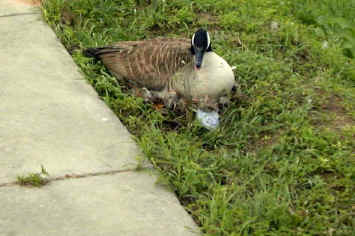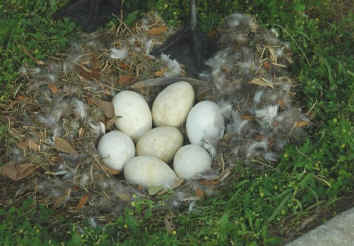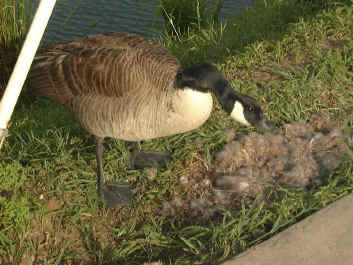MAIN MENU
Diamond Doves
Site Map
Diamond doves
Acquiring Diamond Doves
Caring for Diamonds
Living With Diamonds
Raising Diamonds
Growth of a Diamond Baby
One Year's Reproduction Data
Tribute to China
Other Dove Species
Other Geopelia SpeciesRingneck Doves
Eurasian Collared Doves
Cape Doves
Mourning Doves
Mourning Dove Baby Growth
Rock doves
North American Doves
Dove Genera of the World
All Doves
Caring for Injured or Sick DovesTaming Doves
Other
Books of Interest
Some Bird stories
About Me
Links
Informational Sites
American Dove AssociationCommercial Sites
Jeff Dowining - Diamond DovesGarrie Landry - Diamond Doves
Wade Oliver - The Dove Page
Doveland Press - Diamond Doves
Some Bird Stories

Arabia
Hatched October 8,1999
About 12 days old
On this page I have included a few stories about our pet doves as well as stories about interactions with some other bird species that may be of interest.
This paragraph is an introduction to these stories. We found our first diamond dove walking across the back lawn in the winter of 1984. She was easily caught by throwing a light blanket over her . When she was taken inside, she refused to be picked up and flew slowly around the house going from room to room. Finally, when she landed on the carpet, I put my finger under her chest and she just hopped up on it. That made it obvious she was someone's pet. We soon found out from friends what species she was and the fact that we could feed her finch seed and some greens. Once given the seed, it seemed the bird ate non stop for quite a while even though it did not seem very light. We purchased a cage, put it on top of a bookcase in the den, and left the door open so she could come out when she wanted. She stayed in the den most of the time and when I was working at the desk, she came and sat on the lamp by the hour, sometimes puffing up and sleeping, sometimes pecking at her feathers, and sometimes just sitting there. At night she would return to her cage to eat, drink, and sleep. We named her Fluffy.
That summer I decided to buy three more birds, two males and one female which we named Mr. Muffy, Mrs. Puffy, and Mr. Diamond. Muffy and Puffy were a pair and eventually Fluffy mated with Mr. Diamond. By the end of 1984 we had several babies and over the following years our flock grew at times to over thirty birds. Eventually a number found their way out of the house including Mr. Muffy and Mr. Diamond. Mrs. Fluffy died from a tumor. And one of our favorite new males escaped outside and came back three weeks later, stayed a year and left again. Mrs. Puffy finally died of old age in 1996. She had lived with us since the summer of 1984 and probably was at least one year old before we purchased her. Thus she was around 13 years old. In the end she lost her tail feathers and was nearly blind, but one of our younger males, Mr. Baby, carefully watched out for her over the last few years of her life, never leaving her alone outside the cage and always showing her were the food and water was.
In the spring of 1998, several of our pairs became quite productive and we had seven new birds. But we lost three older birds that same year. We think one was 14 years old and the other was about 12 and his mate was unknown because she was purchased outside. Two birds went to my parents and two went to a retirement home, and this spring the two in the retirement home already have had one baby and are sitting on two more eggs. And for the first time we sold another pair as I had run out of cages and I had a pair using a bicycle as a home. (Does a bicycle really have a resemblance to a tree?)
Now we have a total twelve diamond doves, a ringneck dove, a white Eurasian Collared dove, and a a pair of very loud zebra doves.
Apartment Painting With Diamond Doves
I decided the time had some to paint my two room apartment. My thirteen diamonds (sold two last week) were just going to have to put up my efforts for a few days. I worked on the bathroom for a day and gave it up for the moment - two many wall defects - and finished the bedroom in another two days. Then early yesterday morning I got ready to do the living room, and I spoiled the birds' early morning conversations by moving their six cages into the bedroom.
Results - dead silence. Everyone sat on their perches and did not move. Angry looks. I cooed at them and NO answers. Oh well, off to painting. If they wanted to act like that it was their choice.
Later I head some soft cooing going on but if I went into the bedroom it was quiet. I tried cooing at them, the low raspy affectionate coo and the long distance 3 longs and 2 shorts. More silence.
I took out one of my older males, Nesty, and sat him on my finger and talked to him. He always tilts his head and gives an occasional chirp, pecks my nose, and sometimes does the long distance coo to his friends (and mate?) back in the cage. But now he just stared straight into my eyes - at least he would look at me. So I put him back.
Then I took out Nepal, one of the sweet one year old males, and he sat on my finger for a moment and then bolted for the living room which was in absolute chaos. When he went through the door and saw nothing that he recognized and he seemed to stop flying in mid air for a moment, but he picked up and flew ten or more rapid circles around the room looking for a familiar place to land. There wasn't any. Their home table had been moved from the wall and was covered with paint cans and other junk. Finally he flew back to the bedroom and I picked him up and tried petting him but he was very tense so I put him back in his cage.
So as a last attempt for some bird affection I took out old Mrs. Dee, and as usual she puffed up on my finger and was ready to sleep. Dee's been around and lived in a few different places so there is not too much that bothers her. At least I have one friend...
That night when I went to bed everything was quiet. I gave them a good night long distance coo and there were no answers.
I didn't make provisions for a night light and wondered if it was going to be a problem. It was. Later at night every time I turned over it was complete havoc. You would think cats were in the cages. There go all those beautiful perfect wing tip and tail feathers. Fortunately Peep and India stayed on their nest through the commotion - they are the only ones on eggs at the moment.
So I turned on my night table light and slept with it on the rest of the night. In the morning the birds were very quiet. Usually they get pretty loud when they first wake up. I did not even try cooing as I just knew they would not answer for spite. So I got up, cleaned up the mess, and returned the birds to their original locations. Finally some soft cooing conversation. They seem pretty serious and I only get a few soft answers to my coos. Old King bird, always the loudest cooer (12 years of practice), always answers me and always insists on getting the last coo in. He still has not said one coo since his cage was first moved. Maybe if I take him out and pet him...
Just went to look in his cage and he was sound asleep in his nest with his eyes closed (he often sleeps in the afternoon). I picked him up gently to see if he was ok and he opened his eyes and scootched in the palm of my hand. I wondered if he had been hurt but his feathers were in pretty good condition. Then he saw Mrs. Dee sitting on top of the cages clear across the living room and left immediately to do the bow coo thing for her despite that his wife China was sitting there watching everything. Sounds like things are back to normal.
At least there was no adverse effect from the paint fumes - or was that part of the problem...
Post Script: A day later - King will still not coo to me - or anyone else. But diamonds can be mean and insensitive if they want to. (For example, don't change the water on time and they will dump all the rubbish they can find in the water cup - old feathers, nest material, torn up floor paper towels, not to mention droppings and if they are really angry they will arrange the towel to siphon all the water out on the cage floor). But I still love them dearly
SOME EXPERIENCES WITH OTHER BIRD SPECIES
I have always had a love for birds, perhaps because of the way wild birds often interacted with humans. Below are a few accounts of my experiences with wild birds.
Chickadees
Many people in the north will feed chickadees in the winter and those that do find that these birds are very happy to accept food and will often become quite tame. My father at one time lived in a mountain top house in West Virginia and when he went out to the feeder to add more seed, most birds would retreat to a safe distance. But not the chickadees. They would chirp excitedly and land on my father's, head, shoulders, and arms while he added new food.
But my experience was a little different. I was assigned to take continuous forest inventory plots on a national forest in New England one cold snowy winter. One day, when there was about a foot of new snow on the ground and considerable old snow, I used snowshoes to hike about eight miles into and up a mountain to about the 3500 foot level to a plot location. I arrived a the plot about noon, and thus built a little fire to keep warm while I ate lunch. Pretty soon there was a flock of chickadees flitting around the trees. And as soon as I got my lunch out they were on my head and shoulders looking for handouts. They just about went crazy over some vanilla Oreo cookies I had. And that afternoon while I worked on the plot they stayed around, occasionally landing on me even though I did not offer them some more food until just before I started back down the mountain. When I left they followed me for short while and then returned to their home area.
Since I only had three hours on the plot I had to return the next day to finish the work there. As I was climbing back up to the site the flock of chickadees heard me and rushed to greet me. The seemed extremely happy to see me and once again came and shared my lunch and stayed close by while I finished working on the plot. They were very tame, landing on my finger while I fed them cookie crumbs and sometimes one would push another off so he could take his place. Strangely enough. this one day was the only time I had such an experience during the entire winter. It may have been because this plot was one of the furthest from the road and also because it was located at a higher elevation than the others.
Barred Owl

My Mister Owl
While I was working at a ranger station on a national forest in West Virginia, some visitors brought in a barred owl that was hit by a car and apparently could no longer fly. The ranger asked me to take the bird home and care for it until it could be given to the state wildlife people. I picked the bird up from the perch were it had been sleeping in the office that evening and took him out to my car. He hissed unhappily at me but grasped my fingers and allowed me to carry him to the car where he perched on the back of the front seat. He stayed perched on the seat as I drove in to town and went to the supermarket to buy some round steak for him. He stayed in the locked car while I went into the store and then drove home. When I arrived home, I lifted him up with my hand and walked in the house. There he perched on the back of a kitchen chair while I cut the meat up and fed it to him
He ate a considerable amount of meat and then just perched on the back of the chair while I made my supper. He stayed on the chair all evening, and when I went to bed I turned off most of the lights and lay an unattached door across the doorway from the kitchen to the dining room and the rest of the house. I figured he would sit their all night but then I forgot that owls do not usually sleep at night.
I climbed the stairs to my second floor bedroom and went to sleep. I was alone in the house as the rest of the family was away on vacation. Then, sometime around 1:00 AM, I was awakened by this strange sound of someone slowly coming up the stairs. To say I was frightened was some what of an understatement. I turned on the light and sat up in the bed with my heart pounding, and then I saw the owl flopping up the stairs. He came into the room, and with a struggle got up on my bed, and then finally perched on the wood at the foot of the bed. And there he stayed until I got up in the morning. After that he slept on the foot of my bed each night.
During next few days he became immediately tame and seemed to have developed a complete trust in me. During the day I would take him to the office and he would perch on a little sign above the door into my office In the evening he came home with me and had supper with me. And at night I took him upstairs and put him on the end of my bed. He was a neat companion and would have made an interesting pet. I had the feeling he was willing to stay with me indefinitely if I fed him steak every night.
The owl stayed with me several more days, often stretching his huge wings, and finally he tried some short flights in the house but he really could not do much because he was such a big bird. Finally I figured he could fly well enough to leave, so one evening I put him in the bottom of an apple tree in the back yard. He really did not want to go and stayed on a low limb as it got darker and darker. Finally I picked him up and got him up on a higher limb that was somewhat shielded by leaves. I sat on the back steps for a while watching him and finally he moved higher in the tree and soon I could no longer see him. The next morning when I went out he was no longer in the tree so I hope he had been able to make his way back to the forest which was close by.
Gray Jays or Canada Jays
During the late 1980's I often attended seminars in Fort Collins, Colorado and on the weekends after the seminars I would usually take a day and hike up the Longs Peak trail to the Keyhole at 12,000 feet, mostly in the winter but sometimes in the fall. No matter the season, there seemed to be a place on this trail, just below timberline that was inhabited by these gray jays that are well known to most anyone who hikes or camps in the west. As one is hiking on the trail, they start flying along behind you or ahead of you, and if you stop to rest they often stop where you do in the hope that you will share the snack you may be eating.
In the summer they have many hikers to ask for donations but in the winter I found that they could be very aggressive in a nice way. They would land on my legs and then take food from my hands. I was still using these vanilla oreo cookies as a trail food and they found the sweet much to their liking. I have probably hiked up this trail a dozen times over the years between 1985 and 2002 and every time these birds have encouraged me to stop and feed them.
From 2002 to 2005 we used a number of Forest Service campgrounds in Colorado as a base for various mountaineering trips and almost always had a flock of friendly jays as companions. Sometimes you really had to be careful when preparing food as they would come down and stand on the picnic table right beside you and just waited until your turned your back and would lay into the food you were preparing. But they were such happy birds and they did not really seem desperate for the food which made their presence enjoyable. You did have to watch out though as occasionally they would steal small utensils that were not food, for what reasons I don't know.
Canadian Geese
I was introduced to the Canadian Geese while in Florida. While training for our mountaineering trips I used to run 3 to 4 miles from my apartment. One day when I was running past a small pond next to a busy six lane highway, I noticed a gander standing in the middle of a sidewalk ahead of me. When I approached the gander I had to pass close to him because the road was on

the left side of the sidewalk and there was a steep bank going down to the pond on the right side. Then I saw there was a goose sitting on a nest right next to the sidewalk. She hissed at me as I passed and I offered her a small cookie I had and suddenly there was a great flapping of wings from behind me and I was completely disoriented. The male was hovering over my head causing a whirlwind of dust and debris to be blown about and I could not see anything. I was afraid I was going to end up in the road but finally he landed and I left the area immediately

On subsequent days I had to pass by the location of the nest. The goose was always on the nest, but the gander was swimming far away in the pond. Once he saw me coming down the sidewalk, he headed toward the nest. And if I stood by the goose for very long he was coming up the bank so I left.
Then one day when I came by, both the goose and gander were standing in the sidewalk some distance toward me from the nest. As I approached the gander walked down the bank in the water and the goose headed toward me.

When we were face to face, she blocked the sidewalk so I could not pass, nodded her head, and made some strange sounds. Then she turned around as if to walk down the sidewalk, but looked back at me to see if I was coming. Finally we were walking side by side down the sidewalk toward the nest. Then she moved ahead of me and positioned her self behind the nest and pointed her beak toward the nest which now had no eggs in it. It seemed obvious to me that she wanted to show me that someone had taken her eggs and somehow expected me to do something about it. I looked down the slope toward the pond but found no sign of the eggs while she stood by. There was not anything else to do so I made some mournful sounds of my own and left. From then on when I passed the pond, the goose would come up to me and I would feed her some of my cookies which she now ate out of my hand.

The next year the same goose and gander were back and they had eight eggs and I think seven of them hatched. At that time I started making this pond my running destination and started carrying bread and bird seed to feed the geese and their goslings. All of these birds were easily hand fed.
Now it seems a number of parent geese raise their goslings in this pond each year. This year (2007) there are at least six families, most having five or six goslings each.
Helen White
P. O. Box 367,
Tallahassee, FL 32302-0367
Last revised on: April 22, 2007